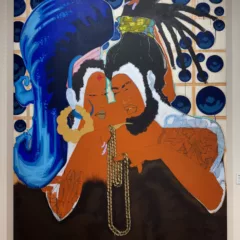In the recent New York Times review, Are All-Women Shows Good or Bad For Art?, Holland Cotter states that “surely an essential justification for an all-women show is to introduce new names, unseen work, understudied lives.” The new exhibition, Carried Weight, curated by Jackie Milad at The Delaware Contemporary (formerly the Delaware Center for Contemporary Art (DCCA)), achieves this aim, successfully introducing highly developed bodies of work by four female artist of color. However, the exhibit could have done more to address the breadth and depth of work that women, especially black women, produce. Though varied in media, all the works selected are figurative and highly literal, and contextualize black identity and female identity through the lens of burden, even as a burden unto itself, a trope that can be both stereotypical and empowering.
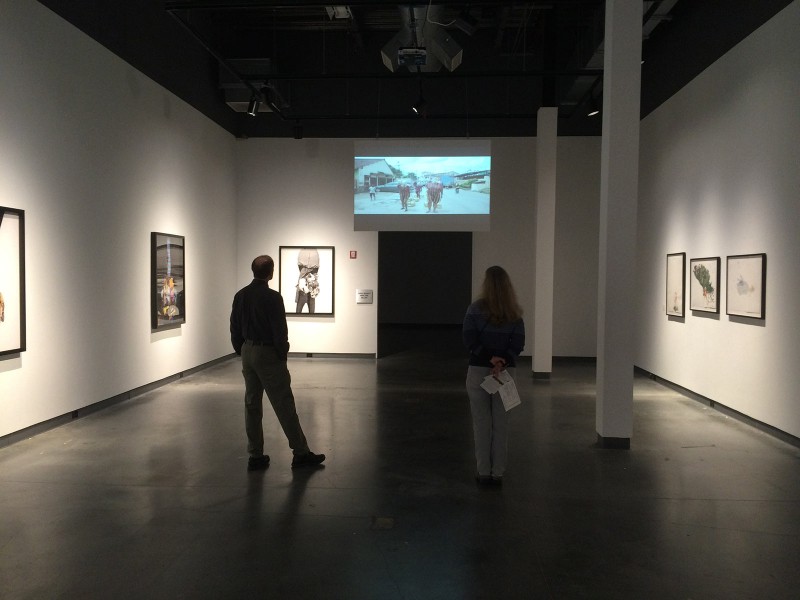
Milad was appointed Gretchen Hupfel Curator of Contemporary Art at The Delaware Contemporary in 2015. As both an artist and culture producer, she is hyper-aware of the assumptions and misconceptions viewers often bring to works of art. Milad comes from Egyptian-Honduran descent and is a first-generation American, with a keen interest in the complexity of identity. For this project, Carried Weight, the curator invited four artists who deal with the theme of personal burdens, whether physical, emotional, historical, or psychological.
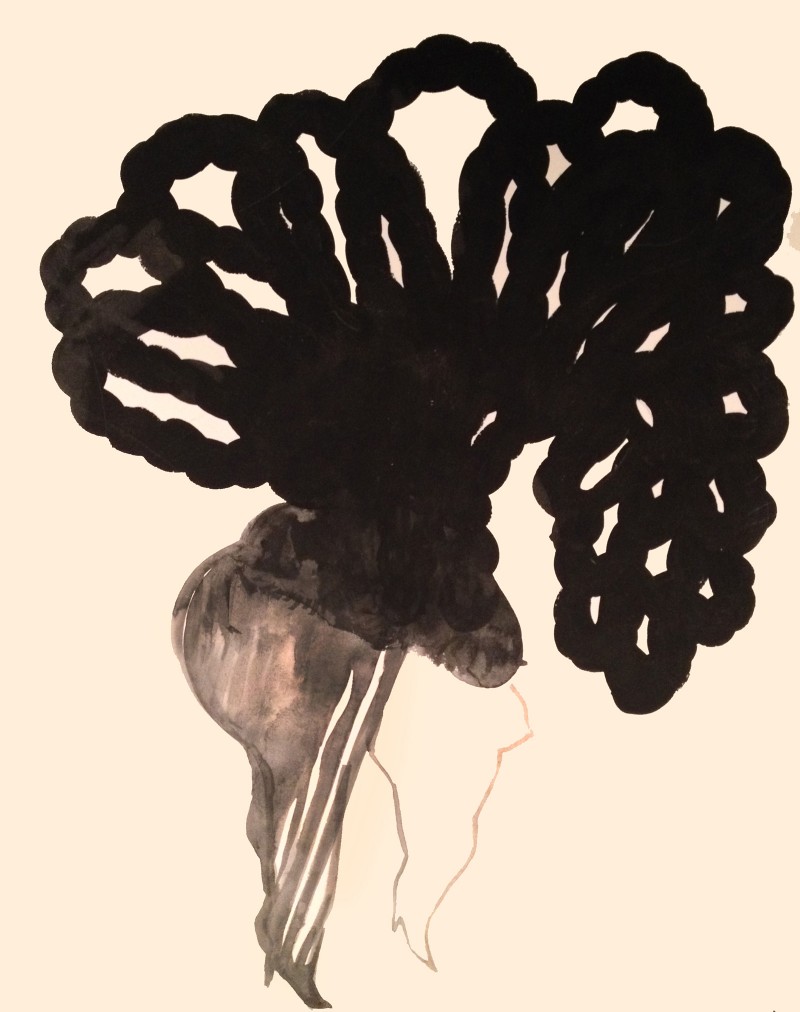
Humor and heaviness
Shoshanna Weinberger’s quirky abstracted ink and gouache drawings stood out from the rest in this exhibit. Hung salon style in a single grouping, the selection of drawings felt both spontaneous and highly specific – the artist presents women, possibly herself, in absurd images of unruly piles of hair, buoyant breasts and garishly rounded rumps that bounce on energetic legs wedged in high-heeled shoes. Weinberger expertly reduces the complexity and subtlety of individual black female bodies to cartoon animals, calling attention to the burden that is hyper-sexualization and objectification of black women. Her work also brought humor to an otherwise heavy show, as the figures danced their way through the injustice of it all, if not out of it, empowered by the struggle rather than defeated by it.
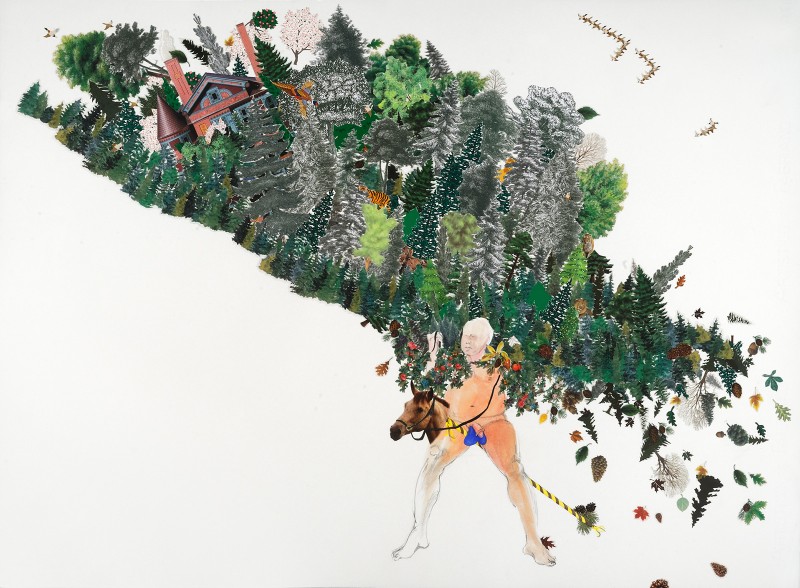
Highlighting the unsustainable burden of Colonialism, three mixed media drawings by Zoë Charleton from her Festoon series play out imagined colonist-versus-colonized scenarios in metaphorical imagery. In “Fort Mose (festoon series),” a small naked white man, delicately rendered in pencil and washes of peach paint, shoulders a lushly collaged forest; a manor house peeks out from behind the treetops. As the toppling mass falls apart, his startlingly blue balls dangle over the stick horse between his legs. “Les Demoiselles” is a life-size drawing of a confrontation between a nude white woman and a black woman wearing only blue striped tube socks. The women, adorned with heavy wooden African masks, a nod to the women in Picasso’s “Les Demoiselles d’Avignon,” battle the burden of cultural expectations with foliage pom-poms and white picket fencing.
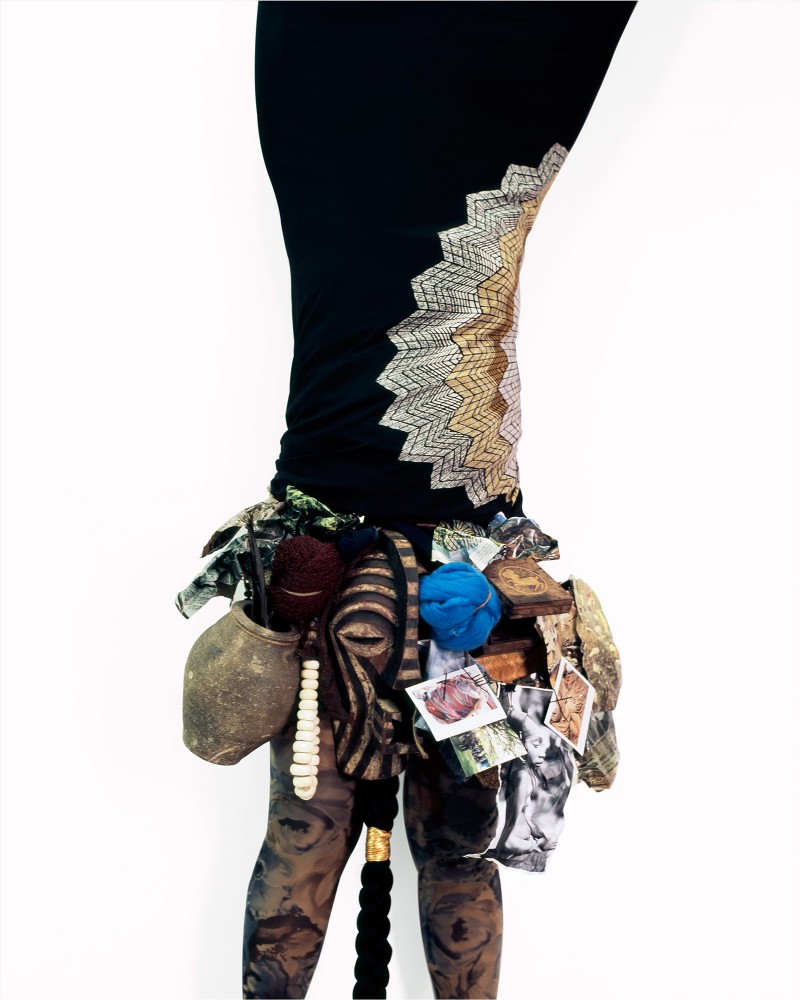
Anonymous burdens
Three large-scale photographs by Xaviera Simmons feature figures bound and disguised by their clothing and weighed down by various belongings. Photographs, jewelry, hair, vessels and an assortment of other cultural artifacts saddle the hips of each figure, signifying the character roles that each is expected to fill. Simmons’ images, though arresting, are impersonal. In their attempt to depict the universal burden carried by an “other” they lack the detail of a specific story. Perhaps it is that the faces, hands and skin of each figure is completely covered, distancing us from the real person inside each image.
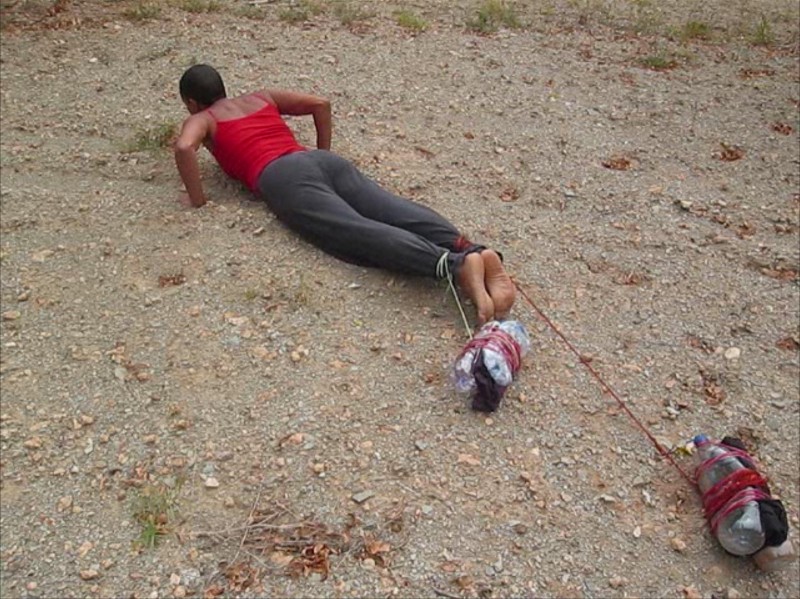
Nigerian-born Wura-Natasha Ogunji’s video “Will I still carry water when I am a dead woman?” is mounted high in the center of the gallery. The video documents a performance staged in Lagos, Nigeria, of group of hooded women walking through the streets of the city, each with a keg of water strapped to her ankle. The performance referenced the Yoruba ritual of Egungun, a sacred masquerade traditionally preformed by men to honor the community’s ancestors. With this performance, Ogunji calls attention to the laborious work of women in Lagos, who still haul water long distances each day to replenish their family’s supply. Though I appreciate the opportunity to be introduced to a new artist, the performance in real life would have been much more moving than the video documentation of it. After conducting research and discovering Ogunji’s body of mixed-media works on paper, their presence, in addition to or in lieu of the videos, would have added some much needed diversity in content to the exhibit.
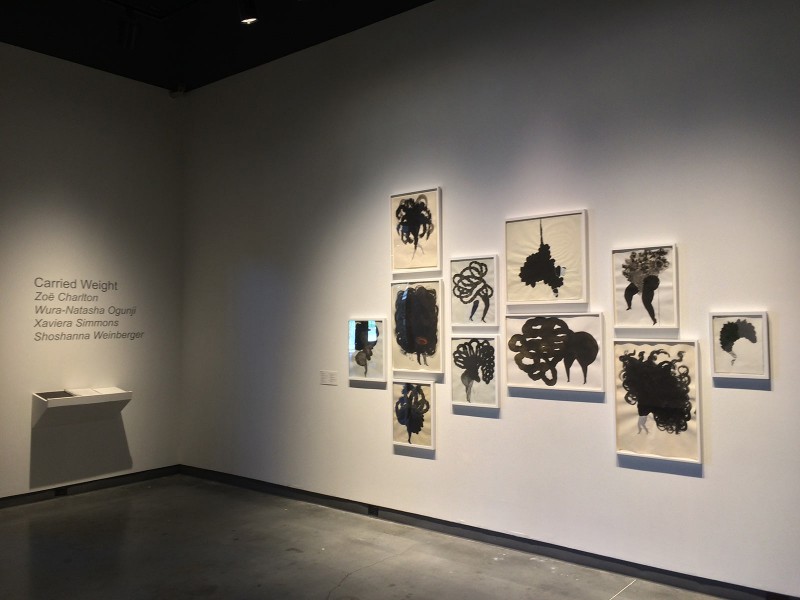
While the burden upon black women, globally, historically, and in American culture is unprecedented and certainly worthy of further exploration, the inclusion of non-literal works that leave room for interpretation and broaden the discussion would have been helpful to the individual works included and to the exhibit as a whole. Additionally, more could be done to challenge the assumptions many have about black women by making room for work that reflects their experience as greater than merely a response to adversity.
Carried Weight is on view through July 17, 2016 in the Carole Bieber & Marc Ham Gallery at The Delaware Contemporary.
The 2016 Gretchen Hupfel Symposium, Repositioning Blackness in Contemporary Art takes place this Saturday, April 16 at the Delaware Contemporary (DCCA). Curator Jackie Milad will moderate a panel of artists, including exhibiting artist Zoë Charlton, renowned interdisciplinary artist Jefferson Pinder, Jessica Lynne, Arts Critic and Cofounder of ARTS.BLACK, and Art Historian Julie McGee. Repositioning Blackness in Contemporary Art will explore the complexities of art creation from within both personal and sociopolitical contexts while considering the ongoing civil rights movement of today.



